Cathedral of sewage: the Abbey Mills pumping station
- Paul Dobraszczyk
- Dec 18, 2010
- 4 min read
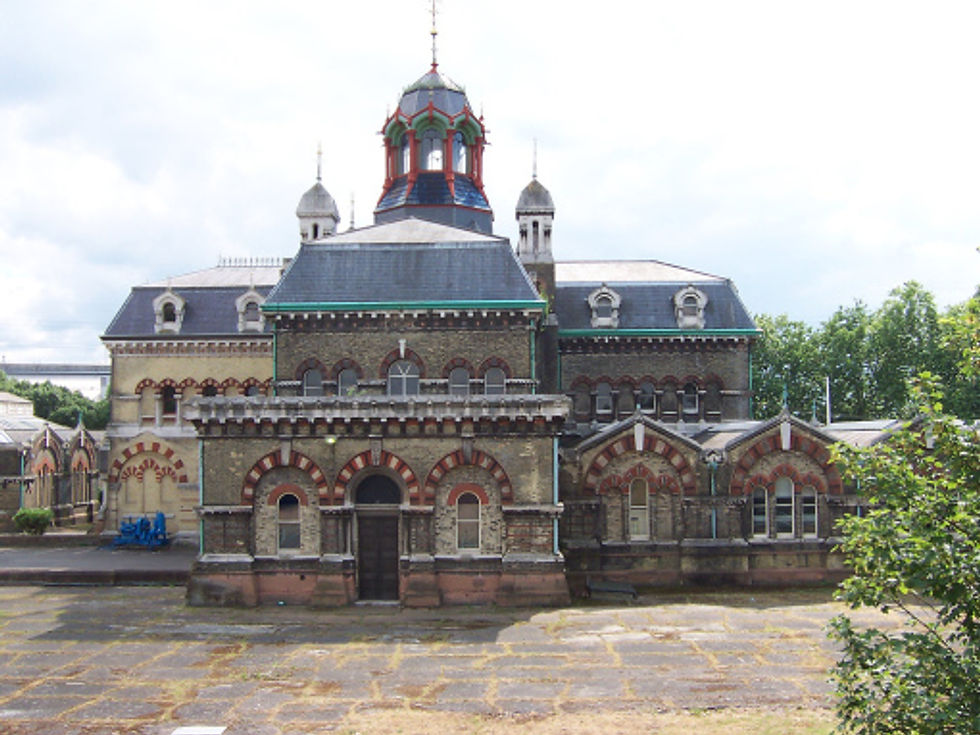
The Abbey Mills pumping station from the Greenway
The Abbey Mills Pumping Station (1865-68) was the last to be constructed in the first phase of London’s main drainage project in the 1860s, masterminded by the engineer Joseph Bazalgette. It was also architecturally the most extravagant and has come to be known as the ‘cathedral of sewage’. The style of the building has been variously described as Byzantine, Italian Medieval, Russian, Ruskinian Gothic and Moorish. The Builder commented in 1868 that the building ‘seemed to be an elegant structure in a swamp [which] might be taken for a mosque or Chinese temple’. The original twin ventilation chimneys (2), richly ornamented and standing 212 feet high, gave this building a prominence that has consistently attracted public attention, and today it still provides a focus for introducing the public to Bazalgette’s system.
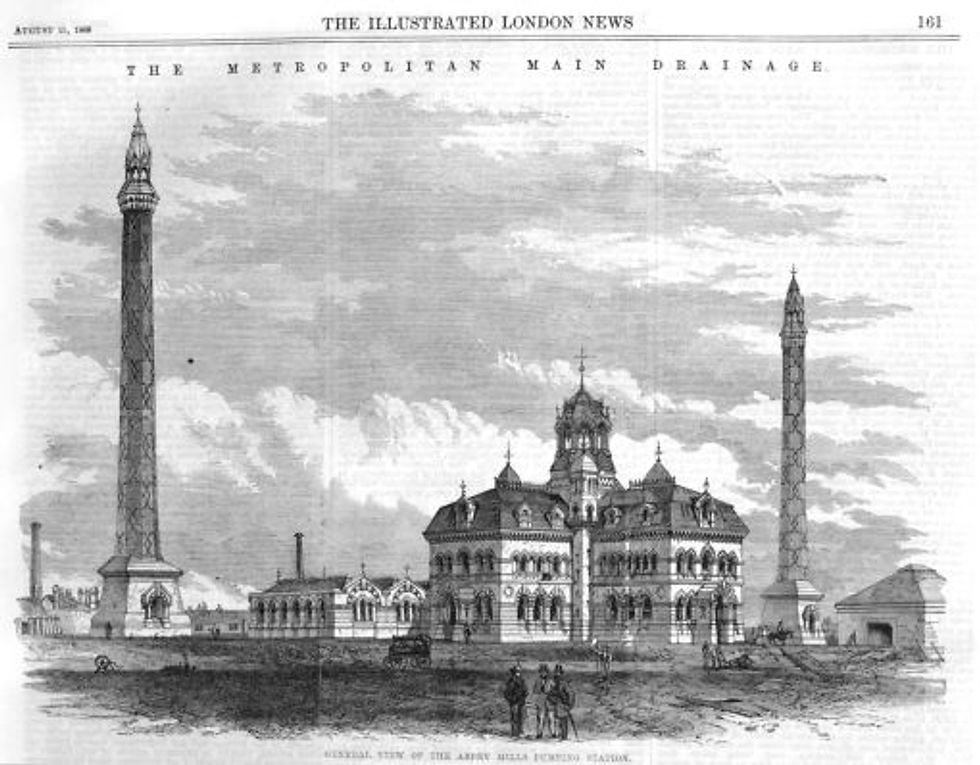
2 Abbey Mills in 1868
The stylistic and decorative elements of Abbey Mills ‘dress up’ the engineering function and present it in symbolic terms: the underground spaces of the building are claustrophobic, dark and disorientating (3) while the second-storey gallery level is light, airy and filled with naturalistic decoration (4); the cruciform plan, cathedral-like doors and internal octagon suggest religious associations normally restricted to churches. Such design elements were employed in many contemporaneous Victorian industrial buildings, most notably markets, which were often built to a cruciform plan and with similar decorative central octagonal pavilions. The symbolic associations of these design features indicate that the architectural embellishment seen at both Crossness and Abbey Mills has a very different function from mere technological expediency.
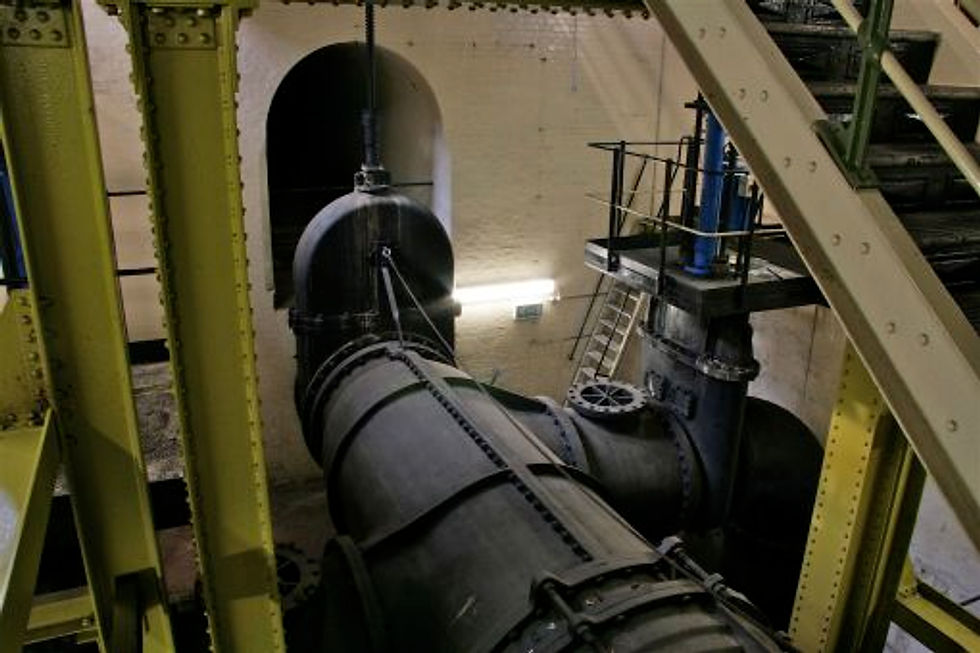
3 Underground spaces at Abbey Mills

4 Interior ironwork from the upper gallery
The architect of Abbey Mills was Charles Driver, a specialist in the use of iron, and it is in the ornamental iron at Abbey Mills that we sense his desire to elevate the value of iron above its strictly utilitarian character. This was an attitude that went against the grain of architectural practise and theory in the 1860s, which, under the influence of the influential architectural critic John Ruskin, strove for truth to nature in architecture, rejecting the use of cast iron because it was a synthetic, artificial material. Iron was seen by Ruskin as not fit to express the noblest architectural ideas. Indeed, Ruskin viewed the use of cast iron as excluding a building from being true architecture; likewise, cast-iron ornament is condemned as ‘cold, clumsy, and vulgar’. But in the interior of Abbey Mills we see no such reservations; rather a reversal of Ruskin’s views: the profuse decorative cast-iron motifs, including roses, lilies and acanthus leaves (5) imitate nature so convincingly that iron here effectively appropriates the function of a natural and ‘noble’ material such as stone.

5 Cast-iron lilies in the upper gallery
Such ‘dressing up’ of iron, seen by most architectural historians as a kind of structural deceit, at Abbey Mills provides a symbolic embellishment of the building’s engineering function. For the Victorians, morality and architecture were inseparable and the morality of architecture was expressed through style and decoration. To Victorian architectural critics like Ruskin, the engineering function of this building would have possessed no moral meaning in itself precisely because it was divested of all such symbolism. Therefore, the moral value of Abbey Mills is communicated through its decorative and symbolic elements: the cruciform plan and cathedral-like doors use religious symbolism to elevate its meaning above mere utility; the exterior façades include features alluding to Gothic Venice – the apotheosis of nobility in architecture, according to Ruskin – while the interior use of decorative ironwork represents an attempt to both elevate iron as a noble constructive material and to give further symbolic meaning to the functional aspects of the building.
The spaces of the Abbey Mills Pumping Station, as the visible part and symbolic representation of a largely invisible system, are ones where old and new conceptions of sewer space collide: Bazalgette’s new rational understanding of sewers conflates with the architectural embellishments which use an older symbolic language to suggest the nobility of both sewers and the constructive material associated with them, namely iron. It remains a point of contention whether these new ideas really did successfully displace and transform the old conceptions of the wider public.
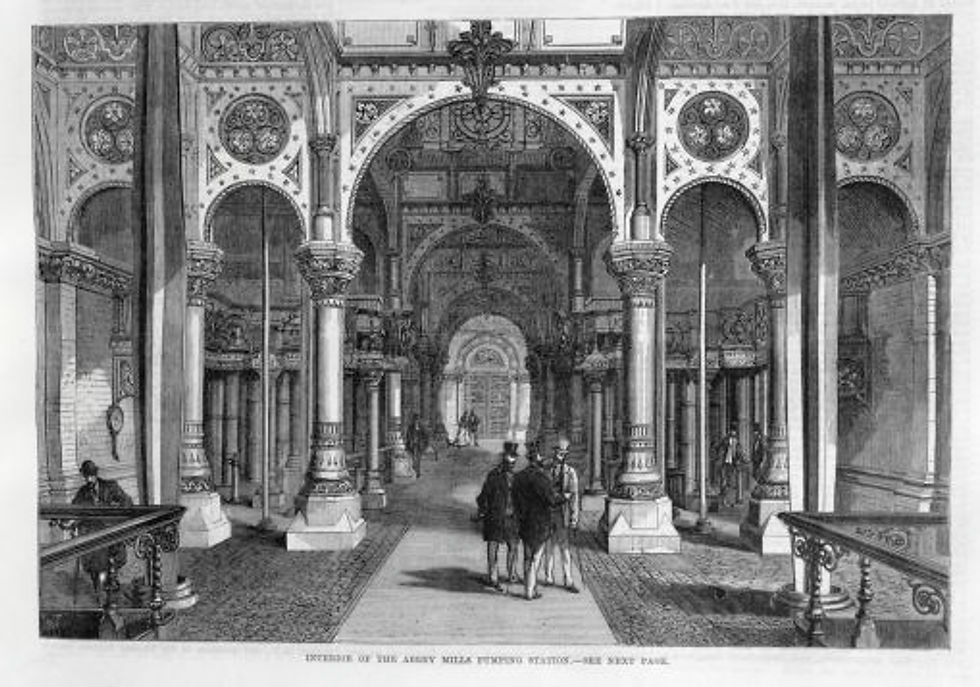
6 Visitors at Abbey Mills in 1868
On 30 July 1868, many of London’s dignitaries did see Abbey Mills when a sumptuous banquet was held at the site to mark the official opening of the entire sewer system north of the Thames (6). Visitors, who were each supplied with a copy of Bazalgette’s description of the building, marvelled at the lack of smell, the lightness of construction and the rich floral ornamentation, all of which suggested a true ennoblement of the sewer and its function.But such a sense of nobility depended on the effective concealment of the underground parts of the building where the sewage was pumped. In the almost identical ceremony that took place at Crossness on 4 April 1865, visitors also admired the beauty of the ornament and the ‘poetical’ qualities of the religious symbolism, but many also descended into the crypt-like space of part of the vast subterranean sewage reservoir (7). Despite the temporary exclusion of the sewage and the dazzling lighting, some visitors felt distinct unease at the thought of being in such close proximity to ‘the filthiest mess in Europe’ ready to ‘leap out like a black panther’ after the guests had left. It was in these underground spaces, close to the ‘ignoble’ sewage, that older associations were stimulated. The complete invisibility of these spaces at Abbey Mills perhaps closed down opportunities for such associations to emerge. However, such concealment by no means marks the demise of these older conceptions: rather, it has been contended that: ‘in mental life, nothing that has once taken shape can be lost … everything is somehow preserved and can be retrieved under the right circumstances’.
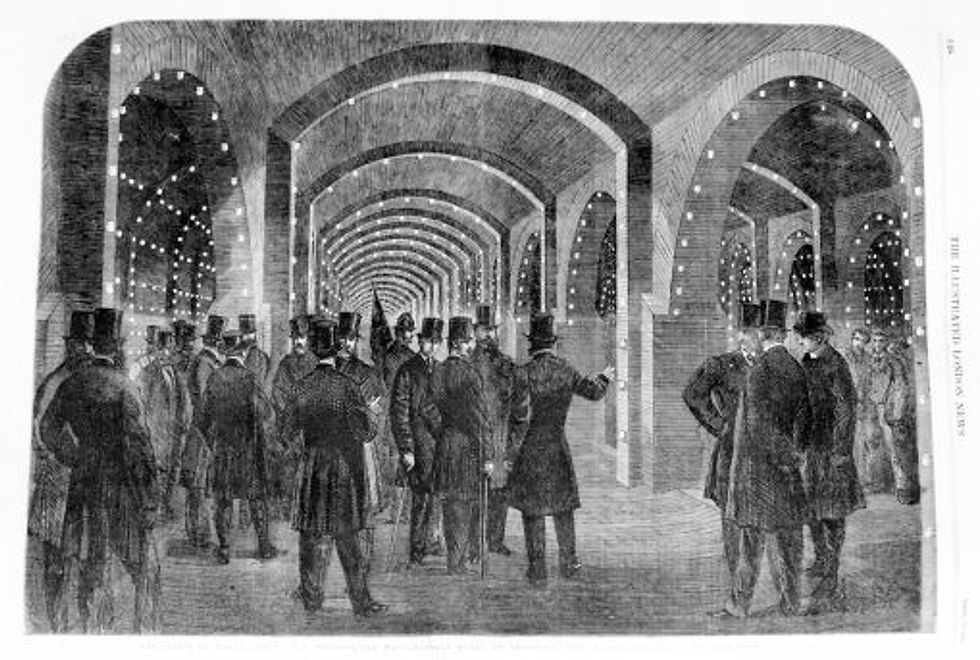
7 Visiting Crossness's underground sewage reservoir in 1865



Comments